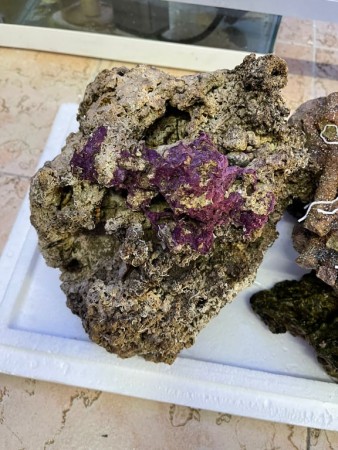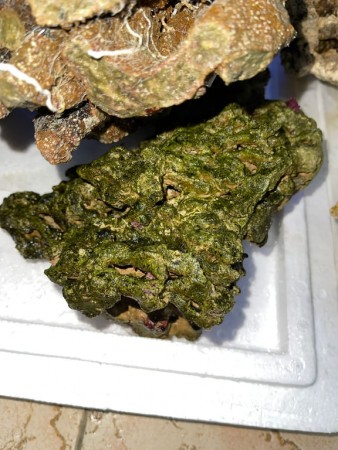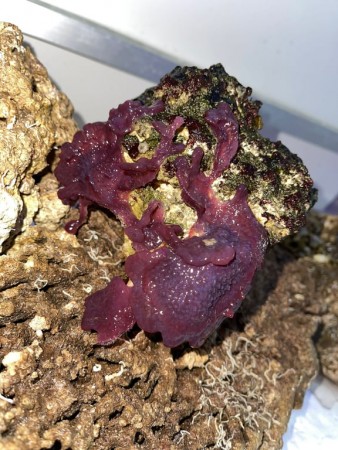THE BEST LIVE ROCK THAT YOU CAN PUT IN YOUR NANO AQUARIUM
- May 19, 2021
- Arianna Rizzi
- 911 1 0

Live rock is used in marine aquariums to create a “mini-reef”. Reef aquariums range in size from small tanks of less than 10 gallons, called “nano-reefs”, that are currently very popular with hobbyists to massive aquariums of several hundred gallons.
the "live rock" itself is not actually alive, but rather is simply made from the aragonite skeletons of long dead corals, or other calcareous organisms, which in the ocean form many coral reefs. When taken from the ocean it is usually encrusted with coralline algae and inhabited by a multitude of marine organisms. The many forms of micro and macroscopic marine life that live on and inside of the rock, which acts as an ideal habitat, give it the name "live rock".
In aquarium systems live rock is aesthetically pleasing, acts as a natural biological filter, and provides habitat for other aquatic inhabitants. Live rock is essential for the reef aquarium because it provides important habitat for motile fish and invertebrates; it provides vital substrates for the settlement and recruitment of benthic organisms; and it contributes to the structure of the reefs and total reef biomass.
Live rock acts as a natural biofilter in fact thanks their introducing in aquariums contribute to the overall quality of the aquarium water in fact excess ammonia, nitrate, and phosphates are eliminated with the help of the algae and corals growing on the live rock's surface, while bacteria supplement the process and restore balance in the water.
 Aquarium Arezzo Srl
Aquarium Arezzo Srl
what are thew life rock species that we can use in our aquarium?
There are many types of Live Rock available for the saltwater aquarium hobbyist some are wild collected and other types are farm raised or aqua-cultured. A large amount of live rock comes from the Southern Pacific region, in areas such as Fiji, Tonga, and the Marshall Islands, as well as from the Caribbean. Each has its own distinct qualities that make it preferable to certain reef aquarists. For instance, live rock from the Fiji region is often porous and large, and rock from the Tonga region is often dense and elongated.
Live rock can be classified into various types:
– Basic rocks: have a lower cost, and we can positioned under of live rock, are very porous limestone, jagged still quite “virgin” that, with time, will be colonized by micro organisms introduced into the tank .
– Rocks with vegetation: colonized by one or more species of algae.
– Rocks with zoanthids: They come mainly from the Atlantic and Pacific Oceans, they are collected in transparent waters and are colonized by one or more species of zoanthids.
– Rocks with invertebrates such Discosoma: Hailing from the Pacific and covered by disc-shaped invertebrates, of various diameters of green, blue, orange or pink.
 Aquarium Arezzo Srl
Aquarium Arezzo Srl
So you can choose between different Live Rock :
FIJI LIVE ROCK
The most common type available. Porous and lightweight. Fiji live rock is usually a light pink in color. This is due to the algae that grow in the deep ocean. The Fiji rock is best used in aquariums as a reef base. It comes handy when housing tropical fish, invertebrates or even corals.
TONGA BRANCH LIVE ROCK
Tonga Kaelini is made from the corals that were broken in storms, that have fallen and were encrusted with coraline algae over time. Very dense which reduces the variety of life that can live within it. Interesting shapes and good for building vertically in the tank. Can make a nice addition to other rock but not recommended as the only type of Live Rock in the tank. Tonga Kaelini live rock will color up with more unique colors than Fiji rock. You will see purple, pink, red, yellow, and green coralline algae. Tonga Kaelini requires moderate lighting and moderate water movement, along with the addition of calcium, strontium, iodine, and trace elements.
PUKANI LIVE ROCK
This comes from Fiji. It is porous and lightweight. Fiji Pukani Live Rock is a premium high end type of rock from the Fijian Islands. The Pukani rock is very colorful and has a great variety of shapes and sizes in each box. Added to a box of Fiji Totoka Live Rock, which is mostly ancient table acros, the Pukani rock will make a wonderful display for your aquarium.
CARIBBEAN LIVE ROCK
Caribbean Reef live rock is 100% naturally collected from the ocean. Caribbean Reef Live Rock is lightweight and porous giving the user the ability to create an aquascape that's both beautiful and functional.
REAL REAF ROCK
Real Reef is composed of several different types of mineral aggregates. It is high in Calcium Carbonate, with amounts in the 82-85% range. Unlike coral skeleton, which is primarily Calcium Carbonate, Real Reef Live Rock contains a variety of essential trace elements and minerals. This remaining 15-18% consists of minerals and trace elements such as: Magnesium, Strontium, and Iron.
BALI ALOR LIVE ROCK
The advantages of using Bali Alor Live Rock is the incredible diversity of coloration, and unique shapes. Bali Alor live rock will color up with more unique colors than Fiji rock. You will see purple, pink, red, yellow, and green coralline algae. Bali Alor rock requires moderate lighting and moderate water movement, along with the addition of calcium, strontium, iodine, and trace elements.
NANO LIVE ROCK
Nano Live Rock is easy to maintain in the aquarium and makes an excellent candidate for the beginner to the expert aquarist. Nano Live rock requires moderate lighting and moderate water movement, along with the addition of calcium, strontium, iodine, and trace elements.
 Aquarium Arezzo Srl
Aquarium Arezzo Srl








About author